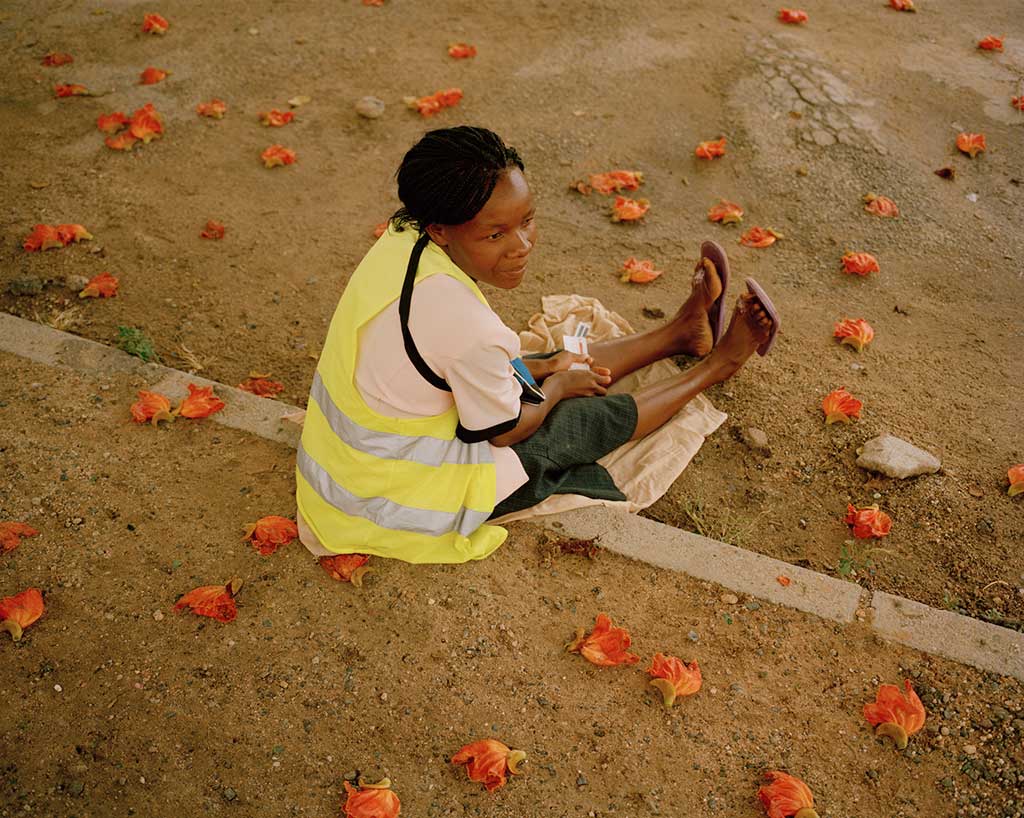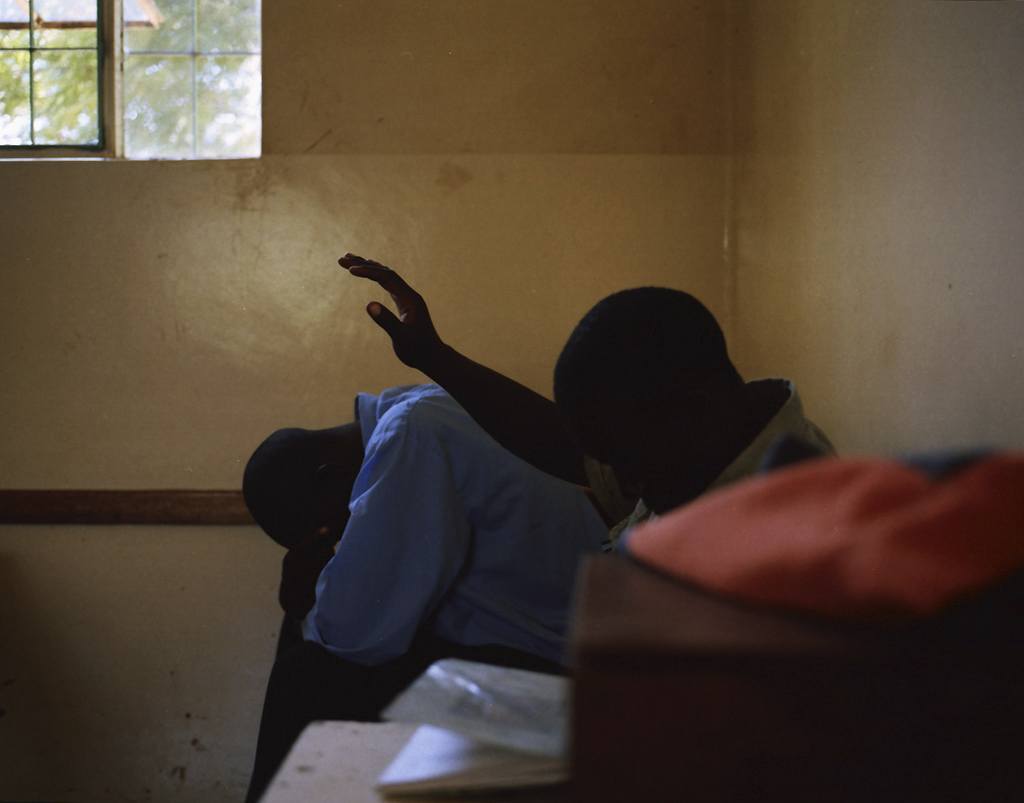After lunch he walks out of the Herbarium—the booth is now unmanned—and takes a turn down a long stretch of road without houses. Eventually he comes upon a trench being dug alongside the pavement. Piles of the reddest earth have been loaded to one side, richer and deeper in colour than brick; he presses it between two fingers and the stain will not come away. Further down the road he comes upon a vast white house behind tall walls. There are surveillance cameras along the length of the compound, and he tries to ask a man walking nervously past him what the building is but the man shakes his head and refuses to stop. He begins to ask the next passerby but with eyes fixed on the ground this man just yells at him. Don’t ask questions! Just keep walking!
He has already guessed at whose house it must be but by this time it’s too late. A grey-uniformed man with a machine gun held to his side trots out of the compound gates and speaks a few words to an armed soldier. The soldier, a short, helmeted figure in fatigues, featureless under the clear afternoon sun, then gestures for him to cross the street. The first remarkable fact about the soldier is the ease of his actions, swinging his rifle into one hand and waving him forward in one practiced movement. Close-up, he has the hard, cubist features of a grown-up child soldier, and uses the point of his rifle’s bayonet to stop his approach some yards away.
The soldier starts asking questions that are intended to demean, to instill fear:What is your problem? Do you know whose house this is? But they are offered with such soft-spoken nonchalance that he keeps smiling and talking, unraveling the story of his return to his childhood home, promising that no pictures were taken of the old man’s house (it’s now clear to whom it belongs: the man who no one, not even the security forces hired to guard him, refer to by name). He is too casual, though, too aware of the absurdity of what he’s gotten himself into, and the soldier becomes testy, starts flicking the rifle’s safety off and on. Do you expect to receive your freedom on a silver platter? he asks. The soldier threatens to call a superior, and then does. The superior interrogates him more rigorously, going through his bag, accusing him of being a journalist. Two men in suits follow some minutes later, asking the same questions about his cameras and his origins, intermittently trying to topple him with accusations.
The posse, it is a posse now, drags him through the tall, grey gates of the compound. He is speaking quickly, and with as much levity and focus as he can maintain. He is pushed across a courtyard. Their questions repeat and he knows that any discrepancy in his answers will be his downfall. Trying to keep conversation light, he asks one of the suits whether they are secret service. A smile. It’s something like that.
He is taken into a concrete-walled room in the centre of which is a plain wooden table. The floor is flooded, and in one corner is a rudimentary jail cell, just wide enough to stand in. He is told to unpack his belongings onto the table by the last of the suits, who then turns around and speaks to him under his breath. He tells him to act relaxed. He tells him to keep talking, says he can talk his way out of this if he’s lucky. For the rest of the interrogation the man offers key assistance, gesturing for him to pack up more quickly or, when he is forced to walk the courtyard again under the gaze of rooftop guards, telling him to slow down, walk more slowly. When he is finally escorted back to the entrance guard house (mouth dry, heart pounding) there is a fifth or sixth round of questioning, and this time his notebooks are read page for page. On the final written page of his workbook, the one on which a list of photography-related tasks is headed Shooting Robert Mugabe, his man flips the book closed before others can see it, this after demanding answers to a list of suspicious wikipedia search terms earlier on: Nuclear Winter, Doomsday Device, The Destroyer of Worlds.




